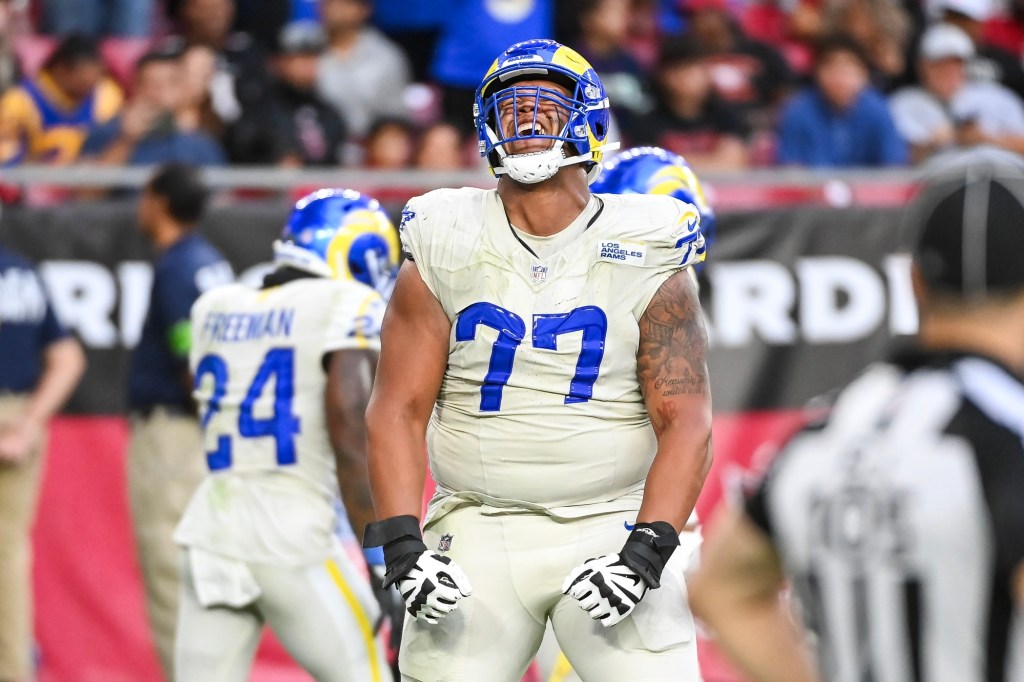
Entering 2024, the Rams were darling picks for the most exciting offense in the NFL. A beefed offensive line, healthy years from Matthew Stafford and Cooper Kupp, continued growth from Puka Nacua and Kyren Williams after their breakouts, plus Sean McVay stirring the drink? There was a lot of reason for optimism.
But by the end of Week 2, the Rams were trying to put the offense back together with duct tape. Nacua, Kupp and two starting linemen were staring down extended absences. Stafford struggled to find a reliable target, while Williams didn’t have the space in the box to run that he expected.
Even when the team got healthy, the offense never fully recovered. Red-zone and third-down efficiencies never improved. Stafford only threw for over 300 yards in a game twice all season. Instead, the Rams learned to walk the tight rope, putting together a five-game winning streak with an average margin of victory of five points to clinch a playoff berth.
Following the team’s divisional round playoff loss to the eventual Super Bowl champion Eagles in Philadelphia, McVay spoke about his desire to create a more “versatile” offense, one that could sustain injuries and keep producing. The head coach’s words were backed by a decisive offseason.
Out was Kupp, the former Super Bowl MVP, in favor of another veteran receiver, Davante Adams, who could create some vertical separation and help finish drives in the red zone. Rookie center Beaux Limmer was replaced by familiar face Coleman Shelton, back after a year in Chicago to steady the line.
And in the draft, the Rams found players who could fill holes. After finishing 25th in the NFL in third-down conversion rate, the Rams used their second-round draft pick on tight end Terrance Ferguson, who excelled at moving the chains in those situations at Oregon. After finishing 30th in explosive plays, they added running back Jarquez Hunter with his 4.44-second 40-yard dash time and his 4.1 yards after contact per carry.
As the Rams report for training camp at Loyola Marymount University on Tuesday, we’ll start to get glimpses of what this new concoction looks like on the field.
Will McVay and his coaches have new play packages to highlight receivers lower on the depth chart? Do Adams and a healthy Tyler Higbee erase the concerns in the red zone? Are Hunter and Ferguson polished enough to play their roles as rookies?
And does any of that matter if the offensive line can’t stay on the field? Already, there’s some level of uncertainty about the tackle position. Right tackle Rob Havenstein missed all of OTAs after having clean out procedures on both his shoulders. Left tackle Alaric Jackson is dealing with blood clots, similar to what sidelined him in 2022.
Neither is certain to open camp on the field. The Rams signed a pair of veteran tackles – David Queensberry and D.J. Humphries – as insurance policies, which should give the Rams more security at the position than they had a year ago.
But that line stability is still the most important factor facing the Rams this fall. Last year, Stafford completed 72.2% of his passes with a 20-2 touchdown-to-interception ratio when kept clean, good for a 108.8 passer rating. That rating plummeted to 59.1 while under pressure (a 47.9% completion rate with four TD passes and six interceptions).
But the Rams feel like they have a deeper roster to avoid any midseason setbacks. Training camp will make clear how realistic those expectations are.
Originally Published:



